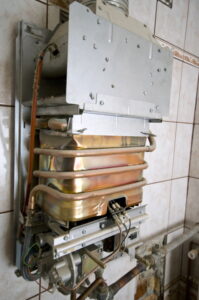If you use an electric furnace to warm your home in winter, you certainly aren’t alone. Although natural gas furnaces are the most common type of heating system in Canada, not all homes can connect to a gas line to power them. Some people prefer not to burn natural gas in their homes because of concerns about safety.
Electric furnaces have several advantages as heaters, such as longer service lives, lower upfront purchase cost, and fewer repairs.
Parts can still malfunction, of course, and we’d like to draw your attention to an important part of your electric furnace that helps it run better, but which can also develop faults and cause problems. This part is the sequencer.
The Job of the Sequencer
When an electric furnace turns on because the thermostat has sent a signal requesting heat, voltage from the household electrical system doesn’t just flood into the heater.
An electric furnace consumes large amounts of electricity in order to provide the resistance heating that warms the air, and if the furnace turned all the way on at once, it would overload the electrical system and trip a circuit breaker.
To prevent this from occurring, the sequencer staggers how the furnace’s heat comes on. Inside the electric furnace are a series of heating elements, each of which contains a coil that conducts electricity and heats up as it does. It’s similar to the metal strips inside a toaster.
The sequencer keeps the heating elements from all turning on at the same time. Voltage enters the sequencer and is directed to the first heating element.
When the heating element becomes hot enough, a circuit in the sequencer opens and allows voltage to flow to the second element.
When it heats up, voltage can then flow to the next element, and so on until all of the heating elements necessary have activated. Not all heating elements may need to turn on during a heating cycle.
Sequencer Problems
The sequencer can wear down due to constant heating and cooling, leading to situations where the circuit may either not close or not open. This can create two different situations:
- The sequencer isn’t turning on all the heating elements. If you’re noticing that you aren’t getting the heat level you expect from the furnace, it’s possible that the sequencer is preventing voltage from reaching the elements. The sequencer may fail to turn the heater on at all if the sequencer won’t allow any voltage to reach the first heating element.
- The sequencer is allowing all the heating elements to activate at once, opening up all the circuits. This will cause the electric furnace to overwhelm the electrical system and trip a circuit breaker that shuts the furnace off. If you’re encountering a tripped breaker whenever you try to use the furnace, this might be the problem.
In either case, stop using the furnace and call for our assistance. It’s rare that an electric furnace can turn dangerous, but it is hazardous for you to try to handle repairs yourself. We’re the pros when it comes to any service for an electric furnace Parksville, BC—leave the hard work to us!
Temprite Climate Solutions serves Courtenay, BC and the surrounding areas. For a job done right, call Temprite!

